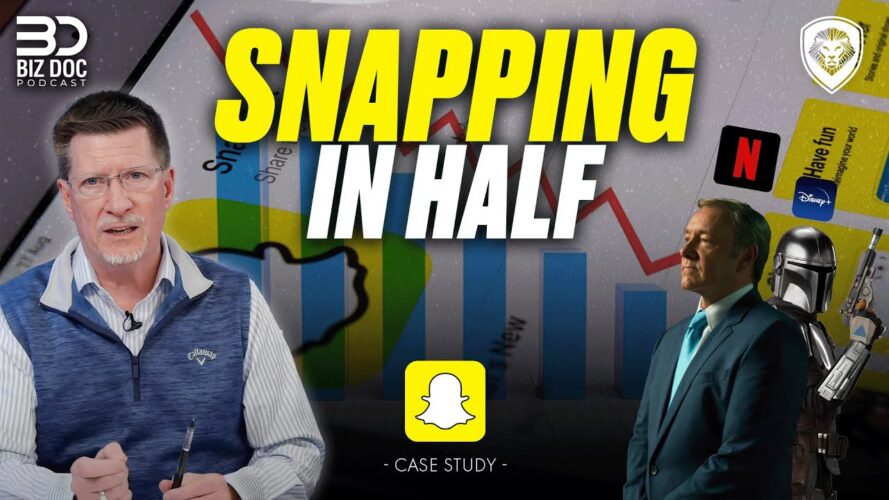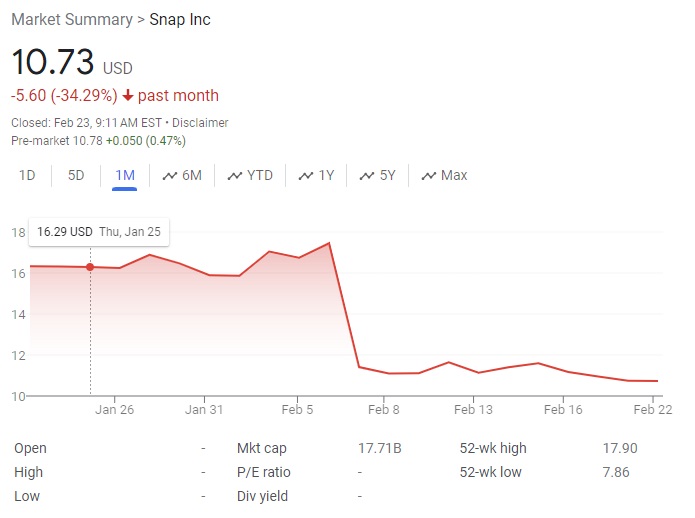In this episode of the Biz Doc Podcast, Tom Ellsworth dives deep into the tensions between streaming services and delivers a case study on Snapchat, from its multiple buyout offers to the delicate situation the app finds itself in today.
Biz Doc starts this case study by seeking an explanation for the numerous “downer headlines” Snapchat has had in recent weeks.
One on February 5th from CNBC said, “Snap to lay off 10 percent of global workforce, around 500 employees.” Another on February 7th read: “Snap Stock Slump After Sales at Snapchat Parent Disappoint.” A glance at the company’s share prices between February 6th and 7th bears that out. As of February 23rd, prices have not recovered.
Learn the benefits of becoming a Valuetainment Member and subscribe today!
Then, on February 8th, HR Brew came out with the headline, “Snap announces layoffs to promote ‘in-person collaboration.’”
Let’s look into its history to find out more.
Snapchat was started in 2011 by Evan Spiegel and Bobby Murphy (along with Reggie Brown). At that time, it was named Picaboo App. In 2012, they renamed it “Snapchat.” In 2013, they introduced the “stories” feature. That same year, the platform was hacked (forcing them to enhance their security), and it rejected Facebook’s buyout offer of $3 billion.
By 2014, they had massive traction, with 50 million daily active users (DAU), or 40 percent of American “adults.” They introduced ads and “lenses” in 2015, and were seeing 100 million DAU. Facebook tried to buy them again that year but failed for a second time.
So if you can’t buy them, copy them! In 2016, Facebook launched its own version of “stories” on its newly-acquired app Instagram, a platform with 150 million DAU.
Snapchat did an IPO in 2017. It saw 200 DAU in 2020 and 250 DAU in 2023.
Watch the rest of the Biz Doc’s video to learn about Snapchat’s financial history and how it helps explain its current financial debacle.
 Shane Devine is a writer covering politics, economics, and culture for Valuetainment. Follow Shane on X (Twitter).
Shane Devine is a writer covering politics, economics, and culture for Valuetainment. Follow Shane on X (Twitter).



















Add comment